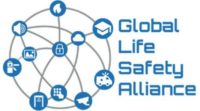

Miller, director of public safety at California Lutheran University in Thousand Oaks, Calif., points out that the test was successful. “The procedures and technology is always evolving. To spread the word, you just have to use a diversity of types of communications but make sure to use what the recipients are using. For many students, for example, e-mail is “old timers’ stuff.”
In addition to mass notification, the university has emergency telephones being upgraded with speakers. Miller works with integrator Premier Security Services, formerly JDC Security, on the phones. His in-house IT operation identified mass notification systems and both in-house operations agreed on a system from Everbridge, Glendale, Calif.
In a nutshell, that’s the story — and the security integrator opportunity and challenge — when selling mass notification.
Many organizations already have some emergency communications, embedded in fire systems, paging or stanchion-mounted phones. End users, spurred by UL and NFPA standards or mandated by state and federal regulations, have or are seeking electronic mass notification which pushes out voice and text messages to a variety of devices beyond typical horns and sirens. The approach can be through security and fire channels, or IT value added resellers or sold directly from a vendor. Decision-makers can range from security, public and life safety professionals to facility management — and from IT to telecommunications. Healthcare, government agencies, utilities and educational institutions — K-12 and colleges — are among today’s prime sector targets.
The technology and operation are fairly straightforward.
There is a centralized database, much like card access systems, of people, with other fields containing “how-to-reach” data and partitioning where appropriate. The database can originate and update through interfacing with other enterprise systems; but, more often, it is a unique list and just as often populated or updated by the employees or students who will receive the messages to better handle ongoing “how to get in touch with me” changes.
Integrators need to view such projects in numerous ways: “Technologies, cost estimates, implementation strategies, system design and integration with other systems, procurement and installation, testing — and training, training, and more training,” are essential elements, says Sandy Zirulnik, executive vice president, technology design consulting services at New York City-based SafirRosette. For some clients, mass notification is going to consist primarily of emergency evacuation systems that are NFPA compliant and UL certified, often including one-way voice communication. “These systems may do double-duty, serving as the required life safety system, but providing an ability to deliver more specific, non-fire-related information to occupants of buildings.”
In terms of design, some mass notification systems are premise-located within an enterprise’s network. For instance, the Sygnal system from Siemens gives connectivity to any point on the network by routing communications through a dedicated server, says Pete Tately with the fire safety business unit of Siemens Industry Inc. In such an approach:
• a server receives input from an external source such as a fire panel, weather alert service or administrator;
• information is relayed via the LAN to push messages to inside devices and outside peripherals;
• information is relayed via the Internet to push messages to personal devices.
Some mass notification systems are really an integrated system of systems, according to Marla Moran of Cooper Notification, Sarasota, Fla. Its combined multiple communications systems cover indoor notification, outdoor warning, text and voice alerting as well as a desktop alerting solution. Such an approach allows facility managers and first responders to focus on the emergency at hand without being slowed down trying to activate multiple systems, Moran adds. Integrators and end users can go beyond that by improving situational awareness through integrating with external data sources and other life safety and security systems such as fire alarm, access control and sensor detection.
For a fire perspective, those firms recognize that mass notification systems can be and often are integrated with the fire alarm system. “The fire alarm system is built and tested for survivability and all components are supervised, so a system as important as a mass notification system should also be protected by the same measures. Many of the devices required for fire evacuation, such as speakers and strobes, can also be utilized in the case of a mass notification event. This enables fewer devices to be installed in the field,” points out David George of System Sensor, St. Charles, Ill.
Companies such as Notifier see the technology as either a combination fire alarm/emergency communications system or as a “sidecar” emergency communications system that can be integrated with existing fire alarm systems. The Northford, Conn., firm ticks off eight important elements that integrators need to consider: supervision, survivability, effectiveness, intelligibility (NFPA covers intelligibility; consider ambient noise, speaker placement, testing, etc.), flexibility, prioritization, regular compliance (see related story, “Standards & Mandates” on next page) and cost.
Among overlooked features, says Rodger von Kries of Boston’s Technomad, is output intelligibility. “Voice distortion is the end of communication. The coolest back-end system in the world fails if speech commands sound like a broken-down fast-food drive-through.”
Beyond premise-based and fire alarm embedded designs, there are software-as-a-service (SAAS) offerings with Web access for command and control and separate Web access for enrolling and changing personal information by individuals. The database, software, message processing and broadcasting are in the cloud.
Outside of a typical security integrator’s territory, reverse notification can play a role. At the Littleton (Colo.) Public Schools, where messages go to parents of the children, that technology has been used for many purposes since 2004, according to Guy Grace, manager of security and emergency planning. “Initially, reverse notification was to enhance our emergency communication capabilities, to provide better communication capabilities in school closures related to weather and information in other emergency situations such as lockdowns and evacuations.”
No matter where the system resides, “it must be simple to enroll,” Miller insists. There is also a security concern. “You have to protect personal information and enrollees must be comfortable with the confidentiality of it.”
For both end users and integrators, system differentiation can come in the capability to send messages to a variety of devices. Depending if the message is voice, text, images, sound or light, delivery can go to fixed devices such as office telephones or desktop/laptop computer screens; through inside and outside visual and audible annunciation with electronic signage, flashing strobes, speakers, intercoms, emergency phones, horns and sirens; and to mobile devices such as e-mails and text messaging to pagers, cellular and smart phones, as examples. Miller also ties in classroom televisions.
More recently, some systems — from vendors with an overall communications focus and not just emergencies — have created a two-way street: Those receiving a message are asked to go beyond acknowledgement and answer quick questions customized by the organization and more personalizing the help needed.
For example, the Centers for Disease Control and Prevention (CDC), based in Atlanta, use mass notification to meet its global health alerting needs. Employing a platform from MIR3 of San Diego, messages go to a worldwide workforce and to a collaborative network of state and city health agencies, hospitals, labs, clinics and other organizations. Uniquely, the technology also allows CDC to receive immediate, direct response from those notified with multiple options, and the added ability to connect directly to CDC’s crisis team via conference call, according to MIR3’s Frank Mahdavi. “We can convert text notifications into speech in various languages to make sure the word really gets out.”
A mass notification system should not only be versatile enough to contact individuals regardless of where they are, but also able to reach out to pre-defined areas of a campus regardless of whom is situated there, according to Sam Shanes of Talk-A-Phone, Niles, Ill. Emergency phones equipped with speakers can deliver messages to selected areas. It’s a help and it lessens the distress to neighbors surrounding an area.
At Oklahoma City University, Talk-A-Phone’s Wide-Area Emergency Broadcast System or WEBS platform encompasses exterior and interior paging, emergency phones, LED signage, SMS, RSS, e-mail, giant voice, fire alarm systems and other technologies.
The emerging popularity of social networking adds yet another wrinkle.
Pacific University of Forest Grove, Ore., has integrated its Facebook and Twitter accounts into the emergency notification system from e2Campus of Leesburg, Va. This allows the university to send alerts automatically and simultaneously to the school’s Facebook and Twitter accounts without the need for logging into Facebook and Twitter separately.
Patrick Fiel, Sr., public safety advisor for ADT Security Services, suggests integrators “think outside the box. Crisis management is the top application, but you can also use the systems to inform people about road closures and traffic conditions.”
But, in some situations, going beyond security can prove a two-edged sword. In a number of college and university settings, the system may broadcast breaking news of interest to students, for example, or “sell” last-minute basketball or campus performance tickets. Miller doesn’t do it, fearing the “crying wolf” effect. “People get so much information from so many sources that sending other than a real emergency dilutes the outcome. It’s a matter of trusting the messenger.”
Another nifty enhancement is the ability to transform mobile phones into location-aware personal safety devices, allowing employees or students to connect with hospital security or campus police, who have the option to activate monitoring of the caller’s position.
At Chicago State University, students and others can sign-up for the enhanced service through a quick online process that registers mobile numbers, an ID card photo, physical description, pertinent health information, emergency contacts, and more. Much like a panic alarm, when a student activates the system from Rave Mobile Safety, Framingham, Mass., the database information — plus his or her location on a map — is automatically provided to campus police and displayed on a large plasma screen in the dispatch office, and on laptops in squad cars that are on patrol.
Still, the bread and butter mission is emergency response.
When Joanne Glasser joined Peoria, Ill.’s Bradley University as its president, one of her first priorities was to make the 85-acre campus a safer environment. With an EST3 life safety platform from GE Security, Bradenton, Fla., already active throughout campus, integration with the existing fire alarm network and command-and-control interface created a stable emergency communications backbone, according to the integrator, Thompson Electronics.
In some applications, the community served by an emergency notification system can be very wide, indeed, providing more opportunities to the integrator.
“When emergencies, severe weather, and other life- and health-threatening incidents occur, Pennsylvanians can be among the first to know by signing up for AlertPA,” says Governor Edward Rendell. It’s opt-in. “The system allows citizens to choose to be notified about emergencies and other announcements.”
AlertPA, powered by Roam Secure Alert Network from Cooper Notification, Sarasota, Fla., lets citizens choose from a variety of alerts including weather warnings, public health notifications, airport delays, consumer product recalls, prison notifications and more.
The state’s application shows how integrators can bring together disparate departments and functions while maintaining the finer focused needs of each.
The goal of integrators fashioning mass notification for clients is to “get the right message to the right people at the right time,” concludes System Sensor’s David George.
Standards & Mandates Push Mass Notification Purchases
As with other security and life safety systems, standards matter to integrators and drive sales from end users. “Our clients want to know what is required by codes, standards, and regulations,” says Sandy Zirulnik, executive vice president, technology design consulting services at New York City-based SafirRosette. He sees impact from actions by Underwriters Laboratories (UL), the National Fire Protection Association (NFPA), the U.S. Congress and various states. And that’s a good thing. The biggest sales drivers come from NFPA’s recent actions and U.S. Department of Education regulations.
NFPA 72: National Fire Alarm and Signaling Code, 2010 edition contains major changes having to do with mass notification systems, which should now include two forms communications: “one from Tier 1 [sirens, indoor and outdoor loudspeakers, electronic signage, etc.] and a secondary method from one of the other tiers” such as short message service text messaging, e-mails and location-specific audio broadcasting, to name a few.
The new code translates into new business opportunities for integrators. As expected, the code emphasizes multiple notification layers and highly recommends that mass notification systems integrate with fire systems. “Remember that NFPA may not as yet be adopted by all jurisdictions,” Zirulnik warns.
Another purchasing prod with the possibility of grant money aims at colleges and universities and is a federal law that requires the institutions to “immediately notify” their students and staff upon confirmation of a significant emergency on campus. A federal matching grants program can fund campus emergency response and notification improvements.








